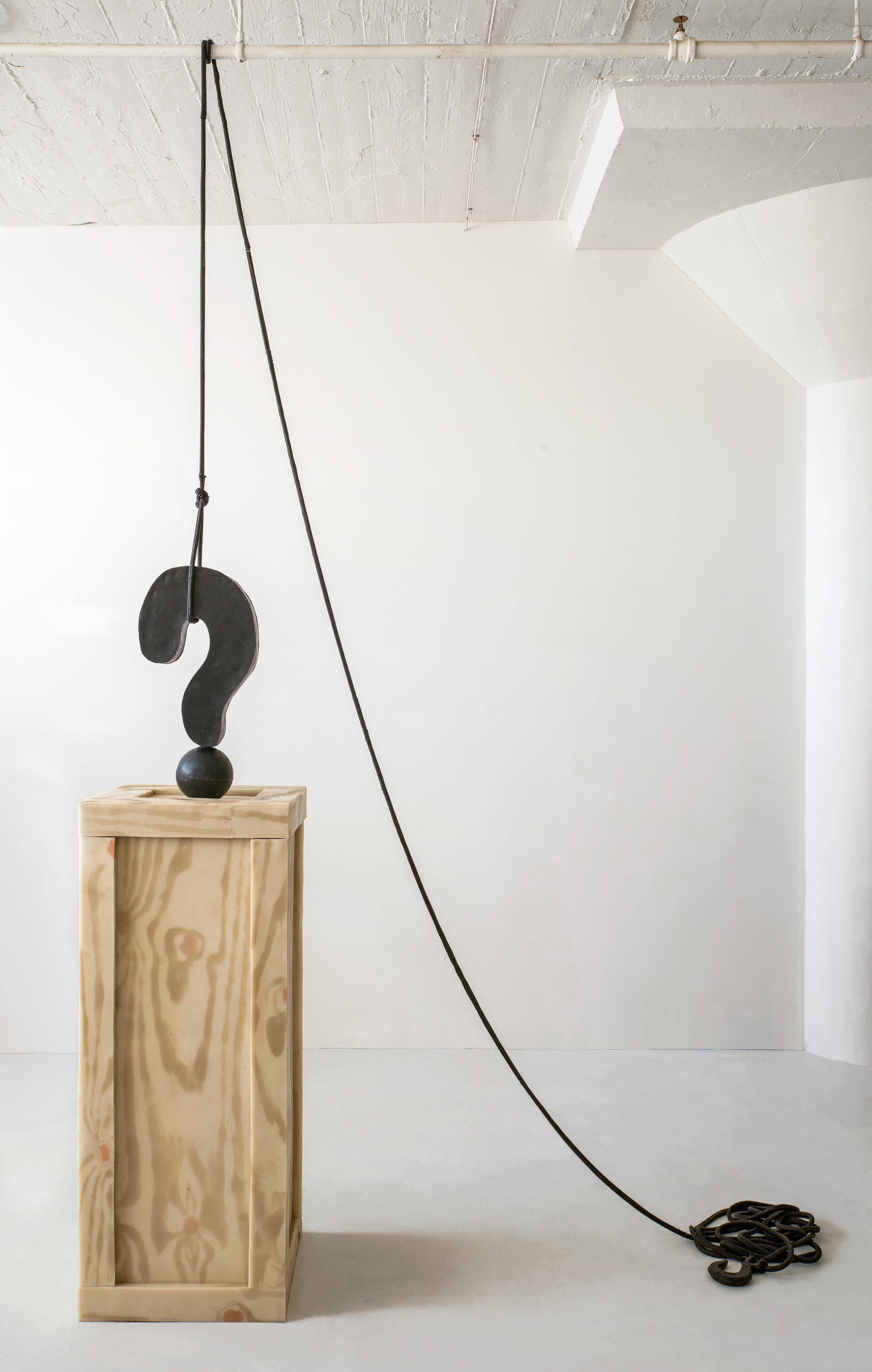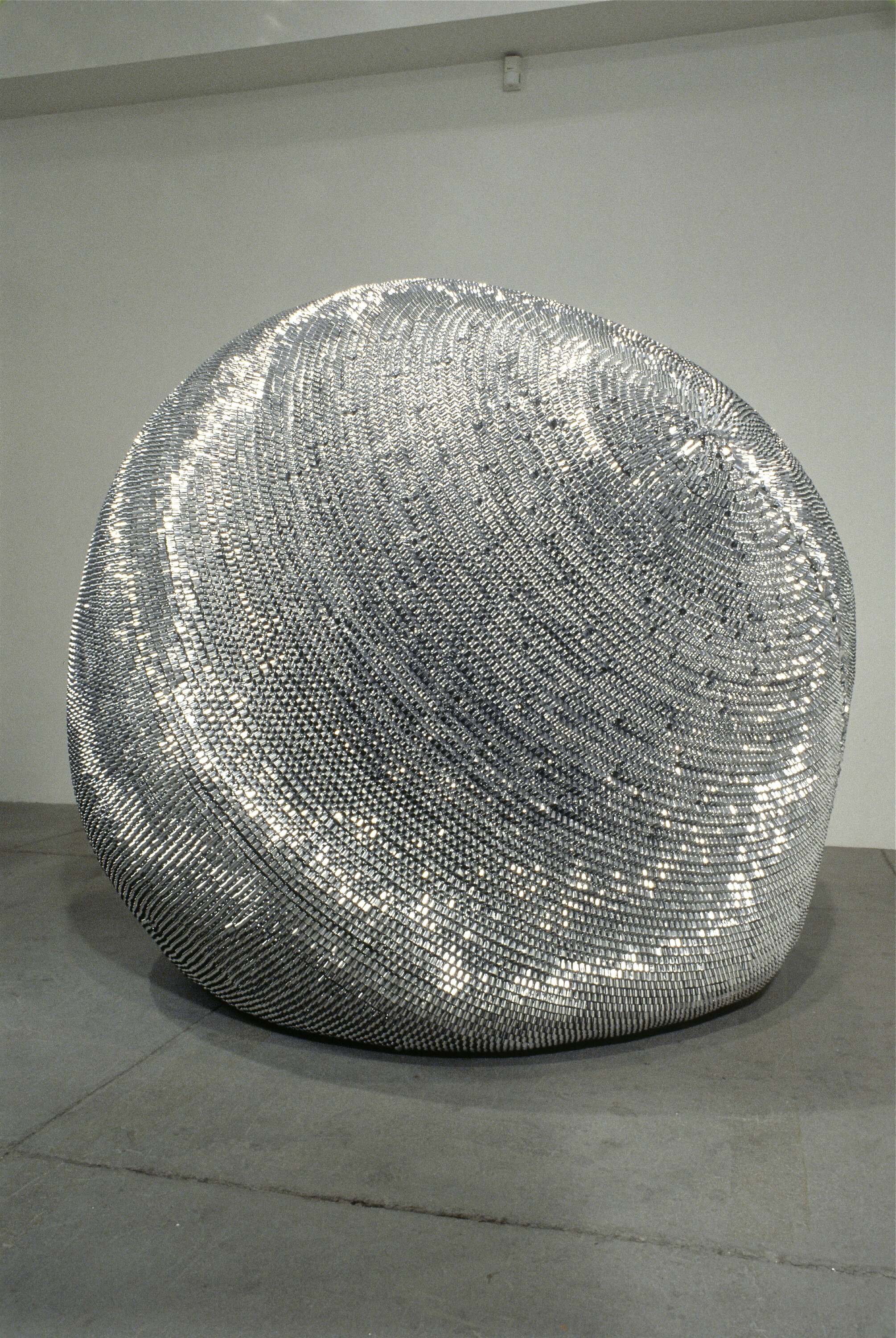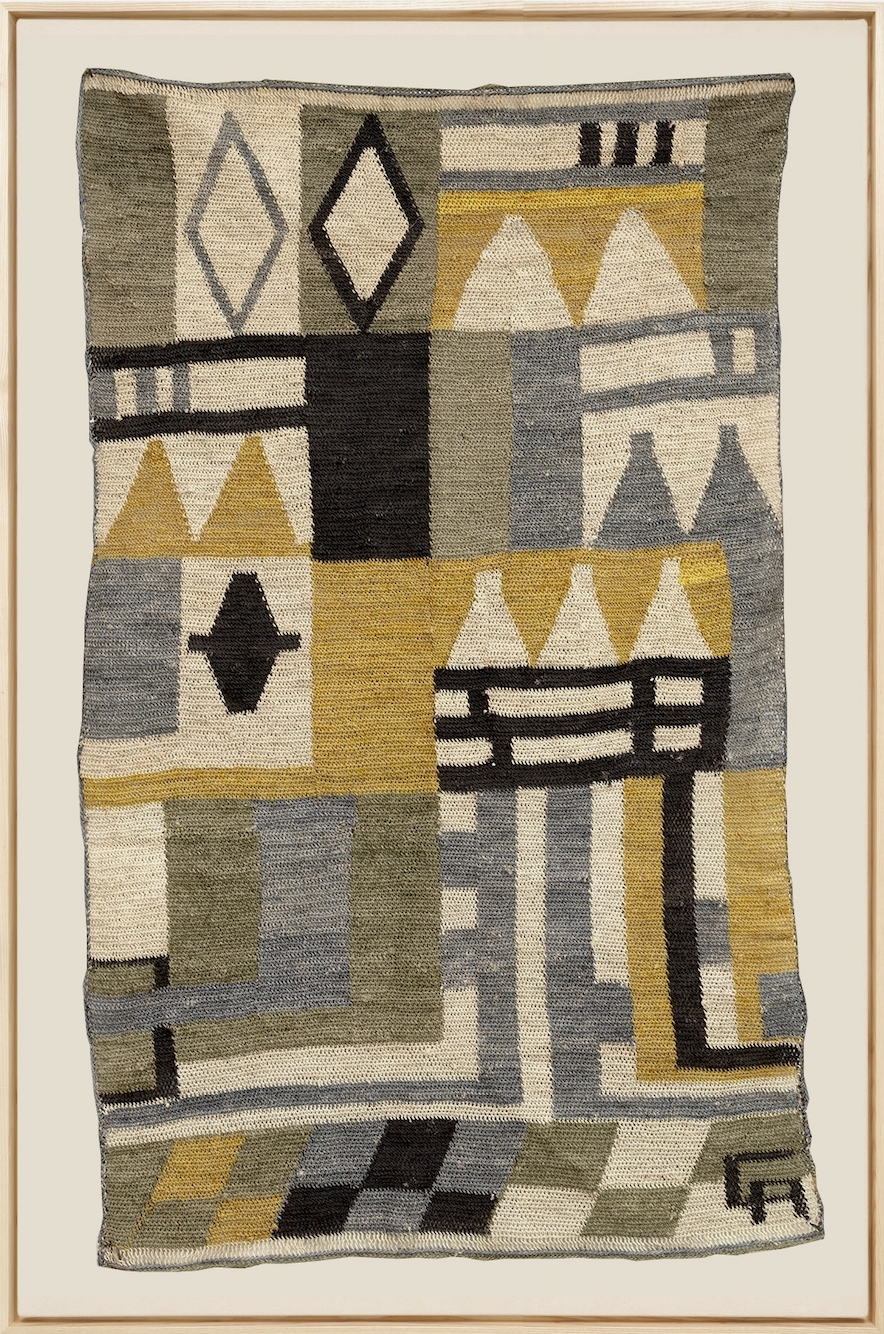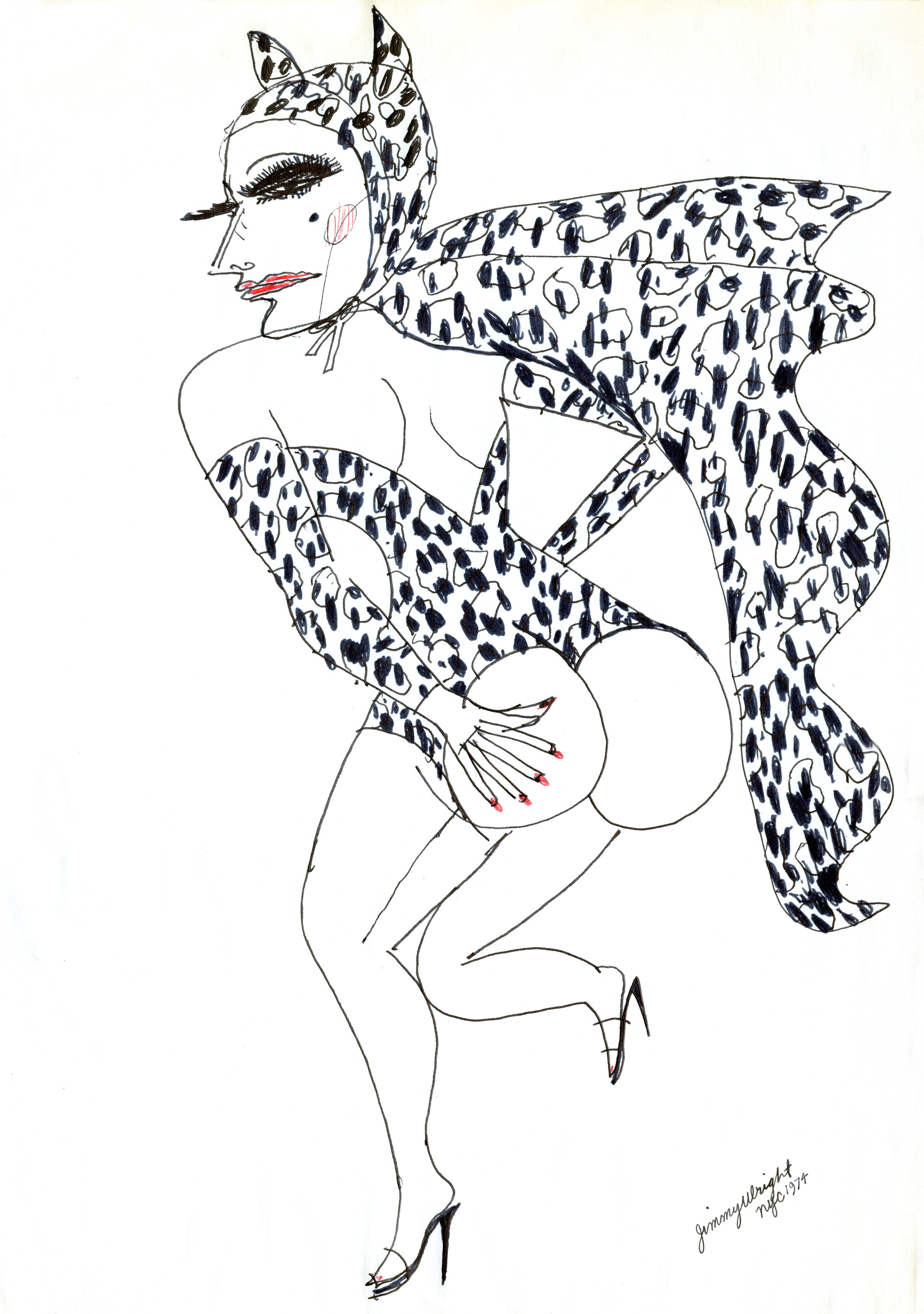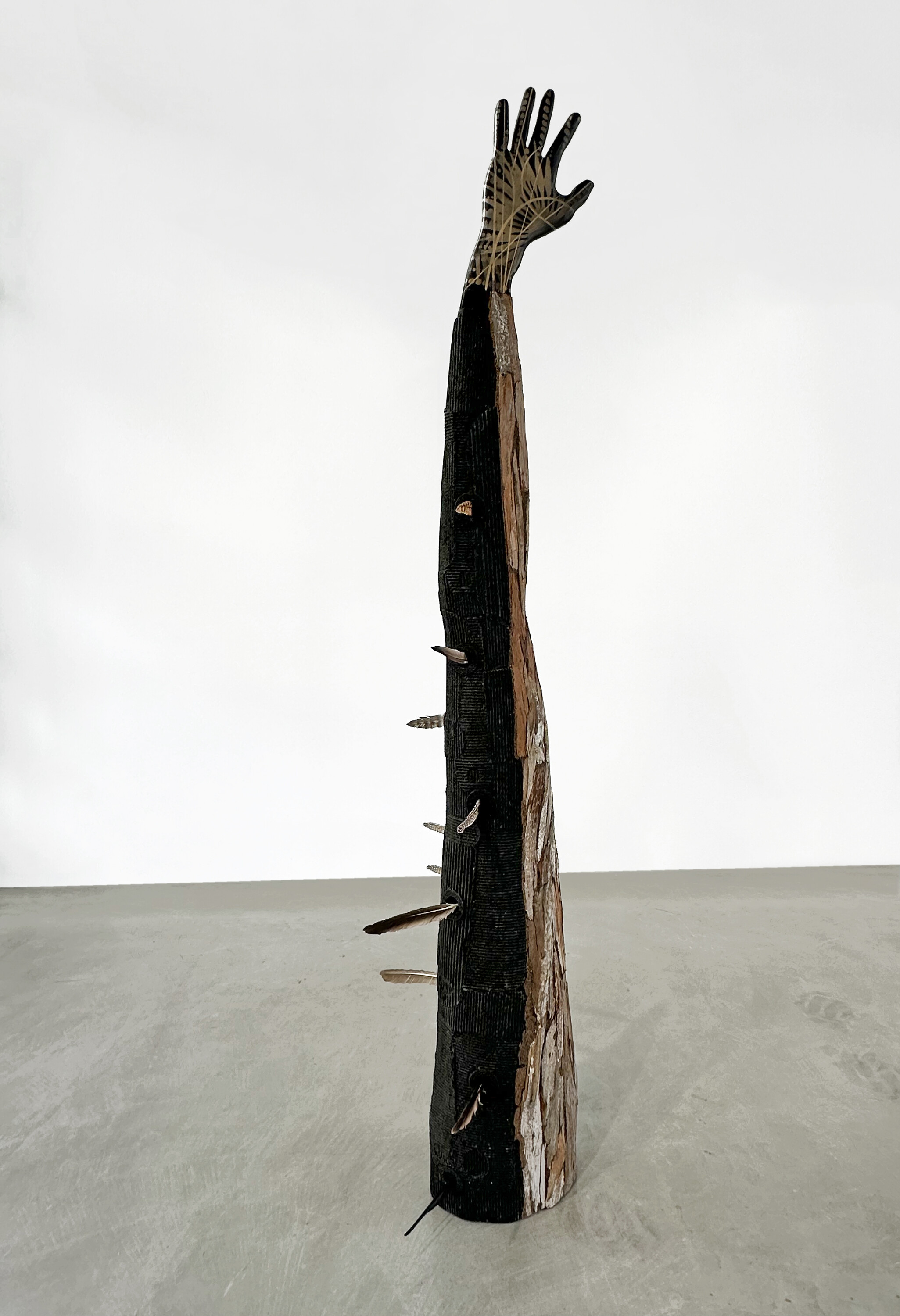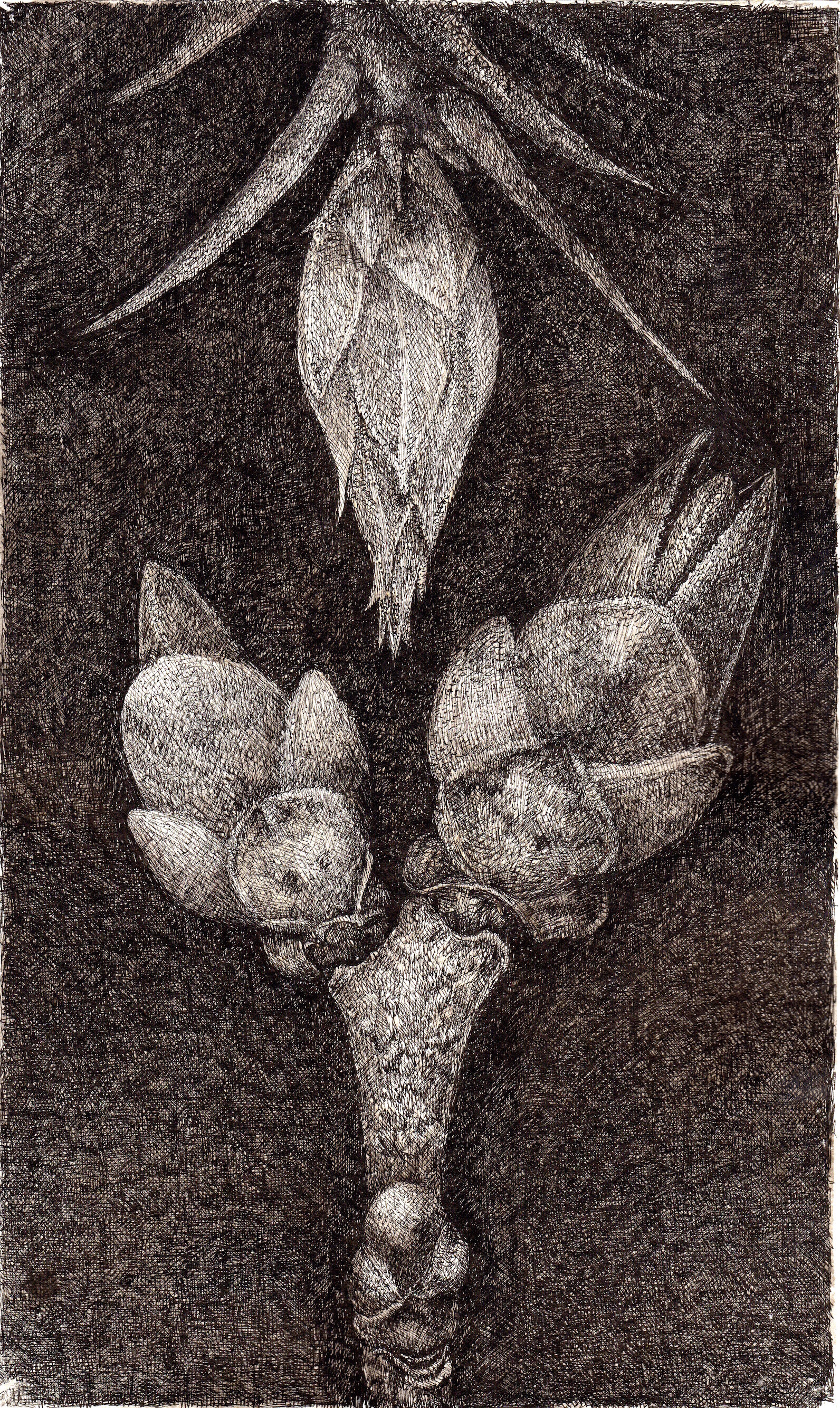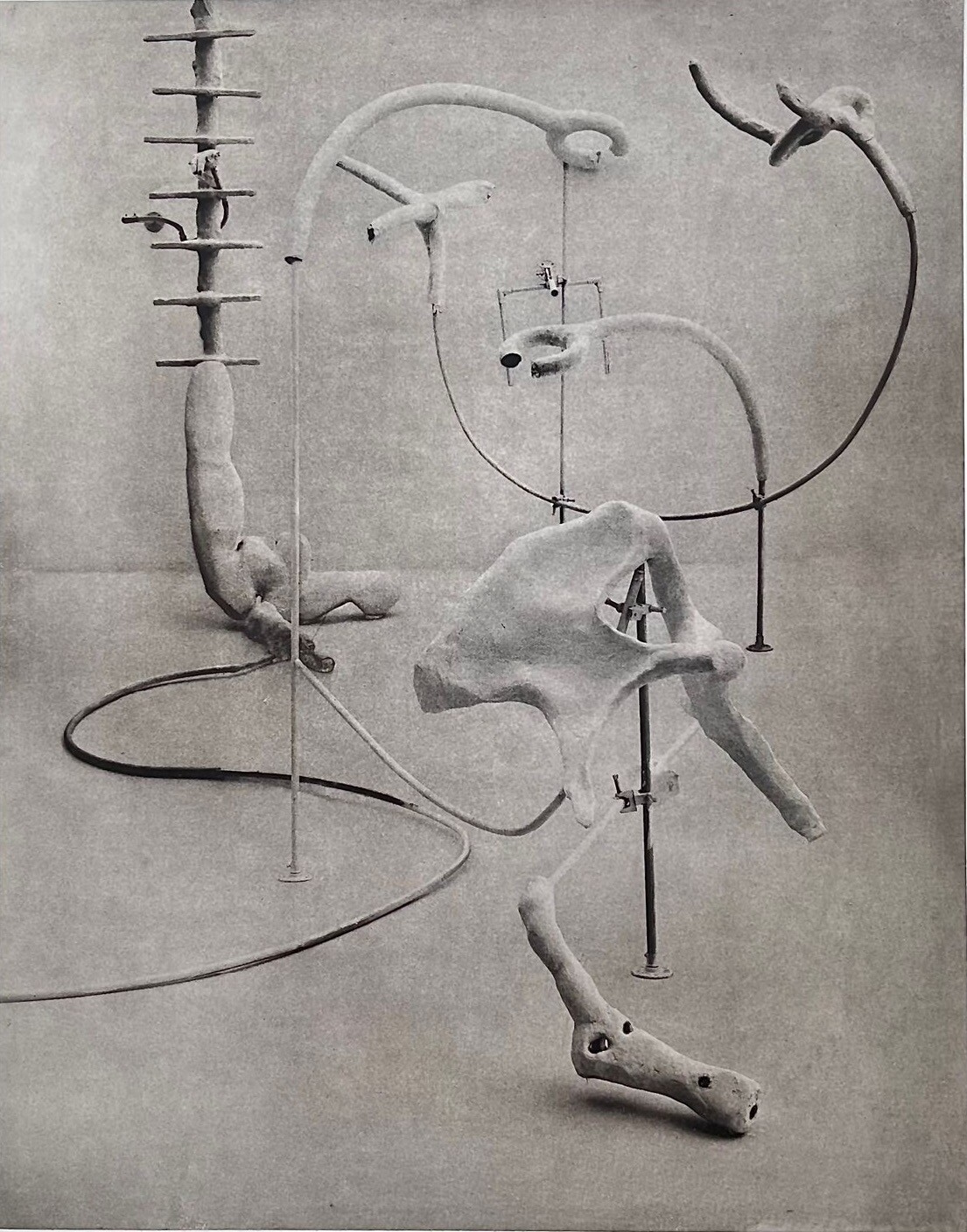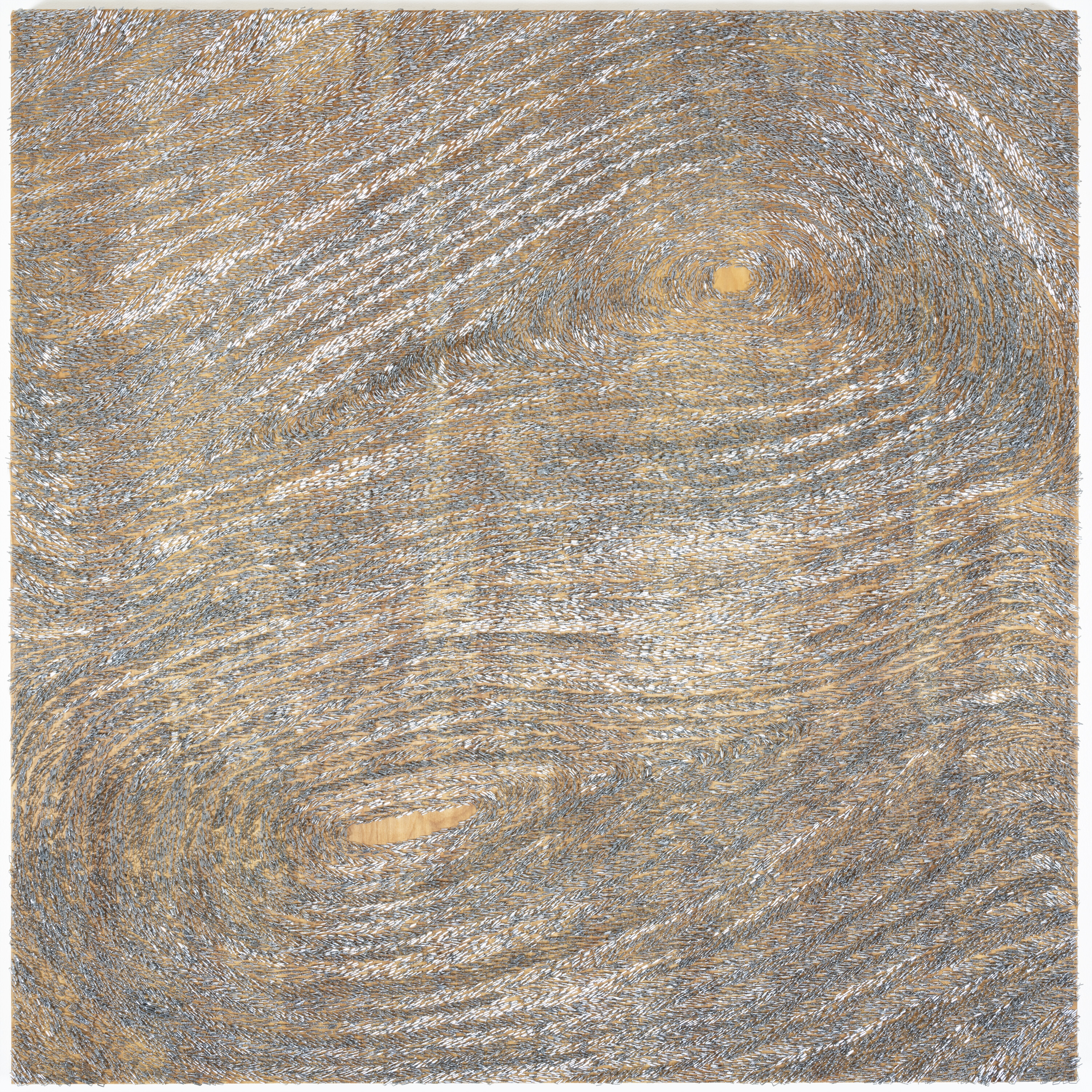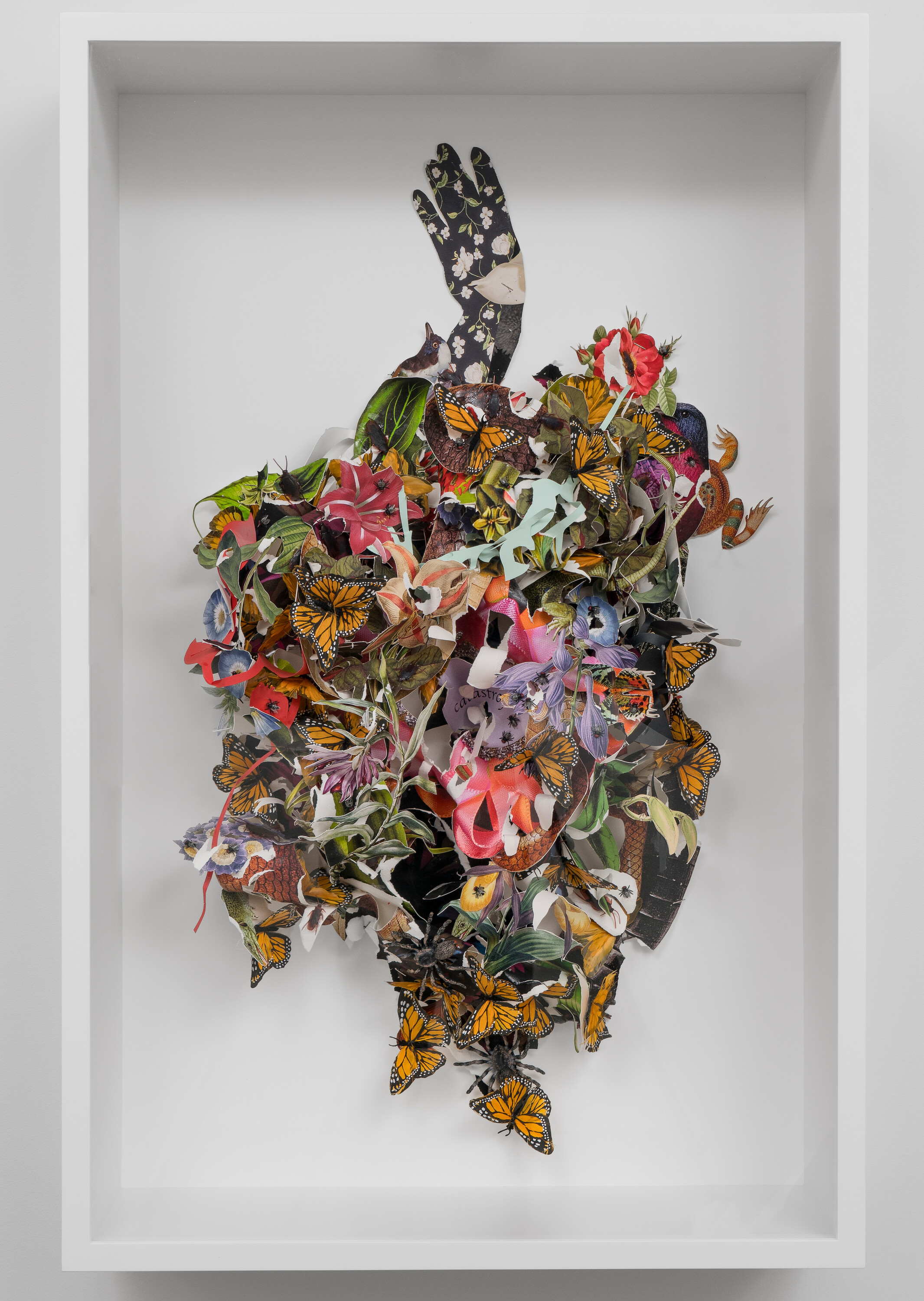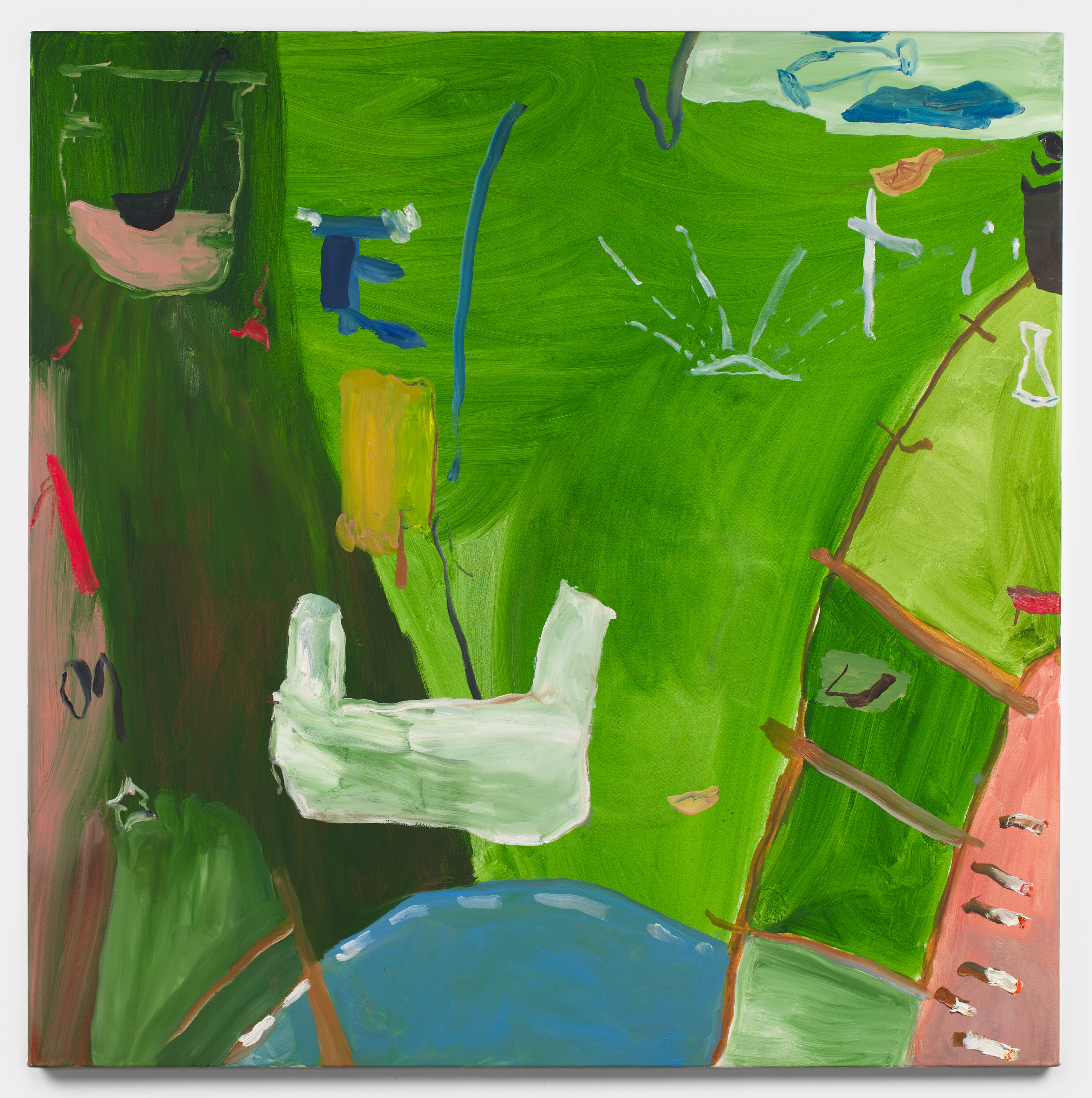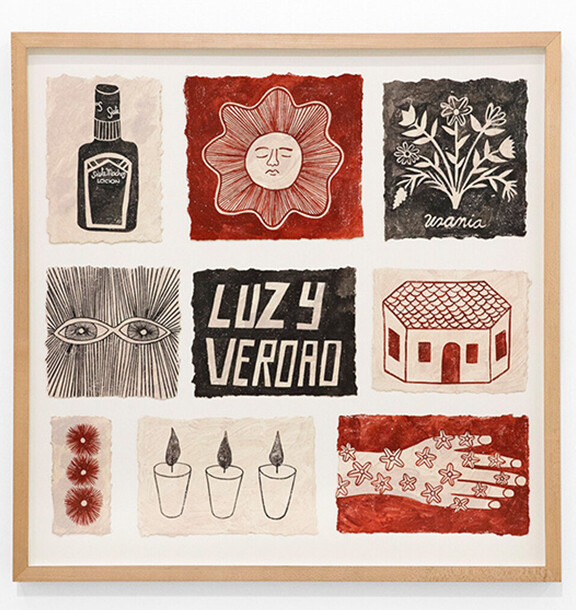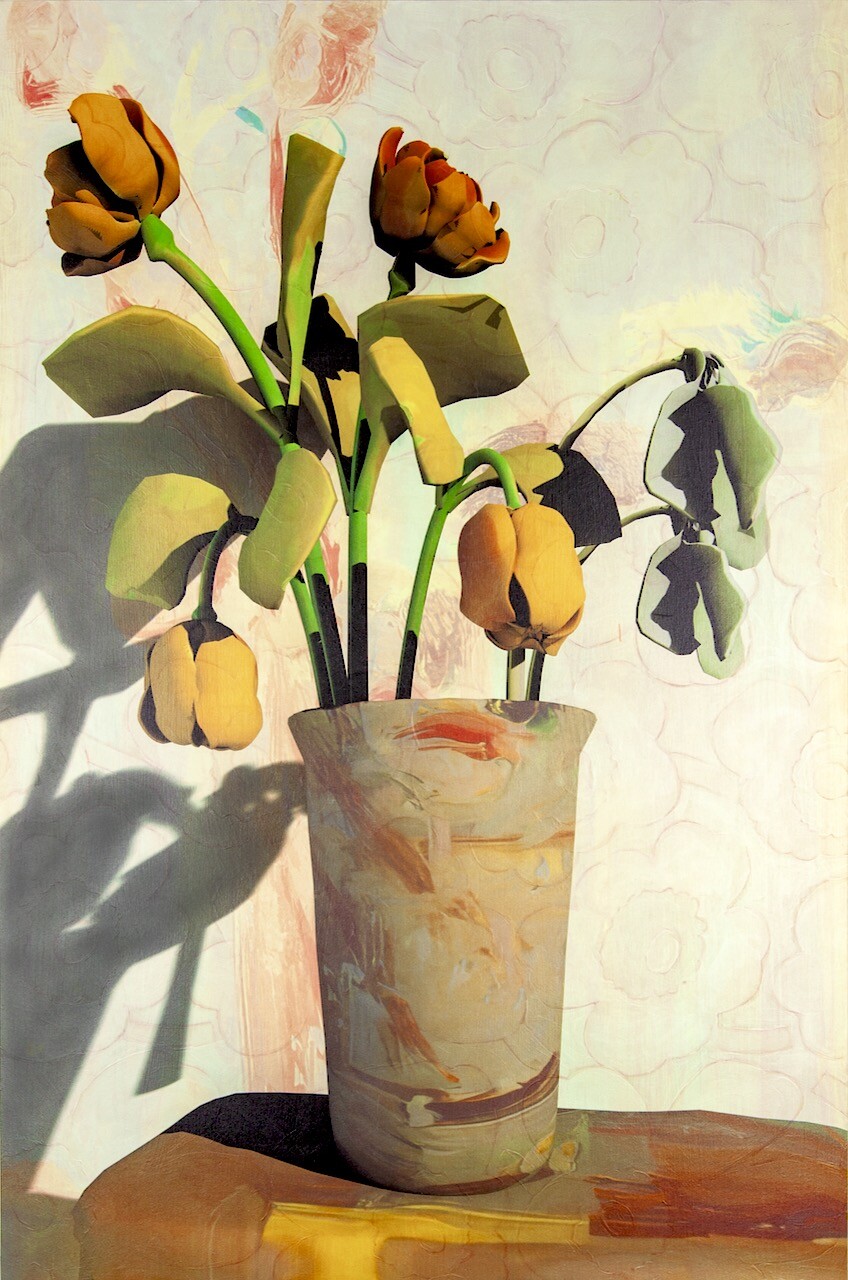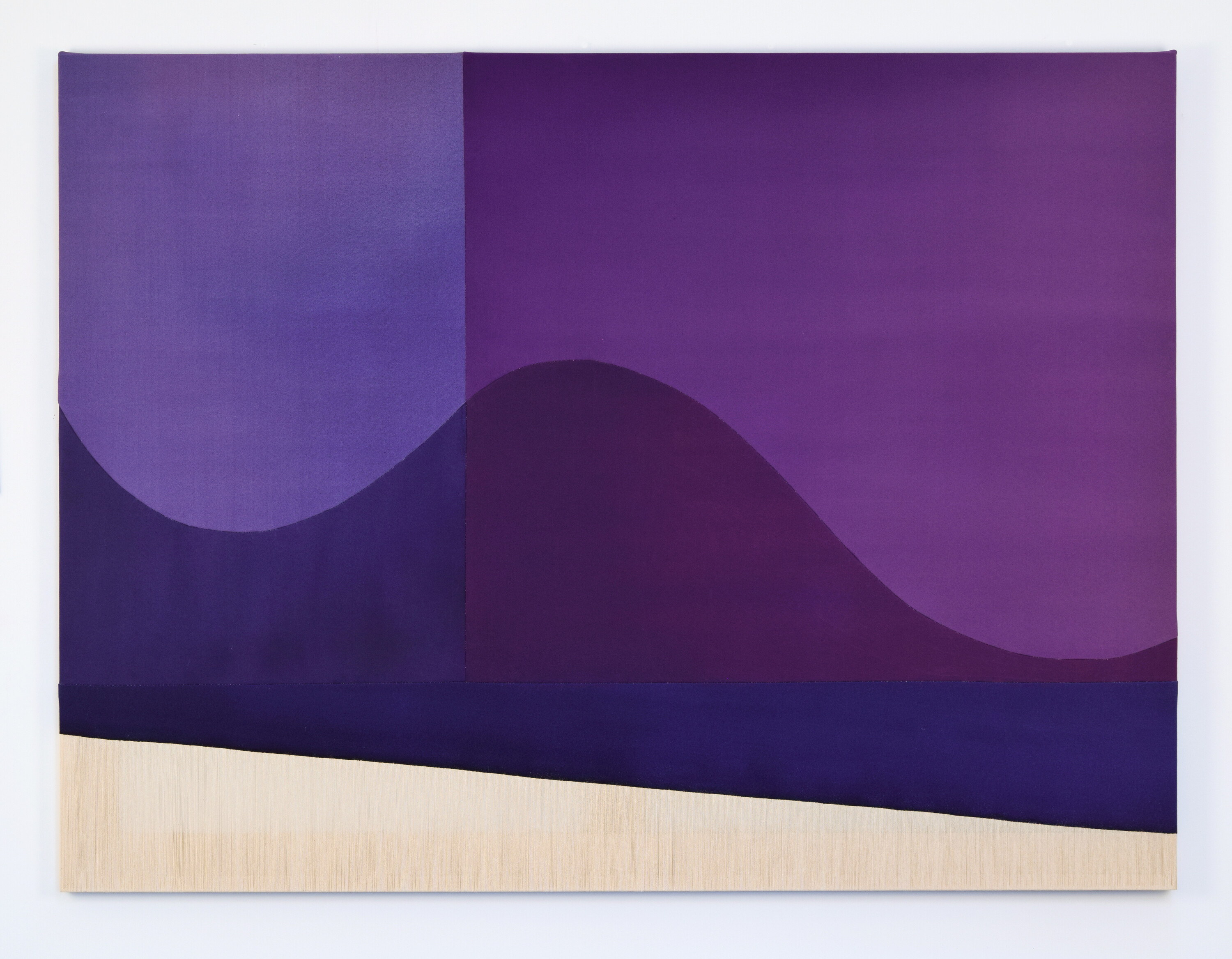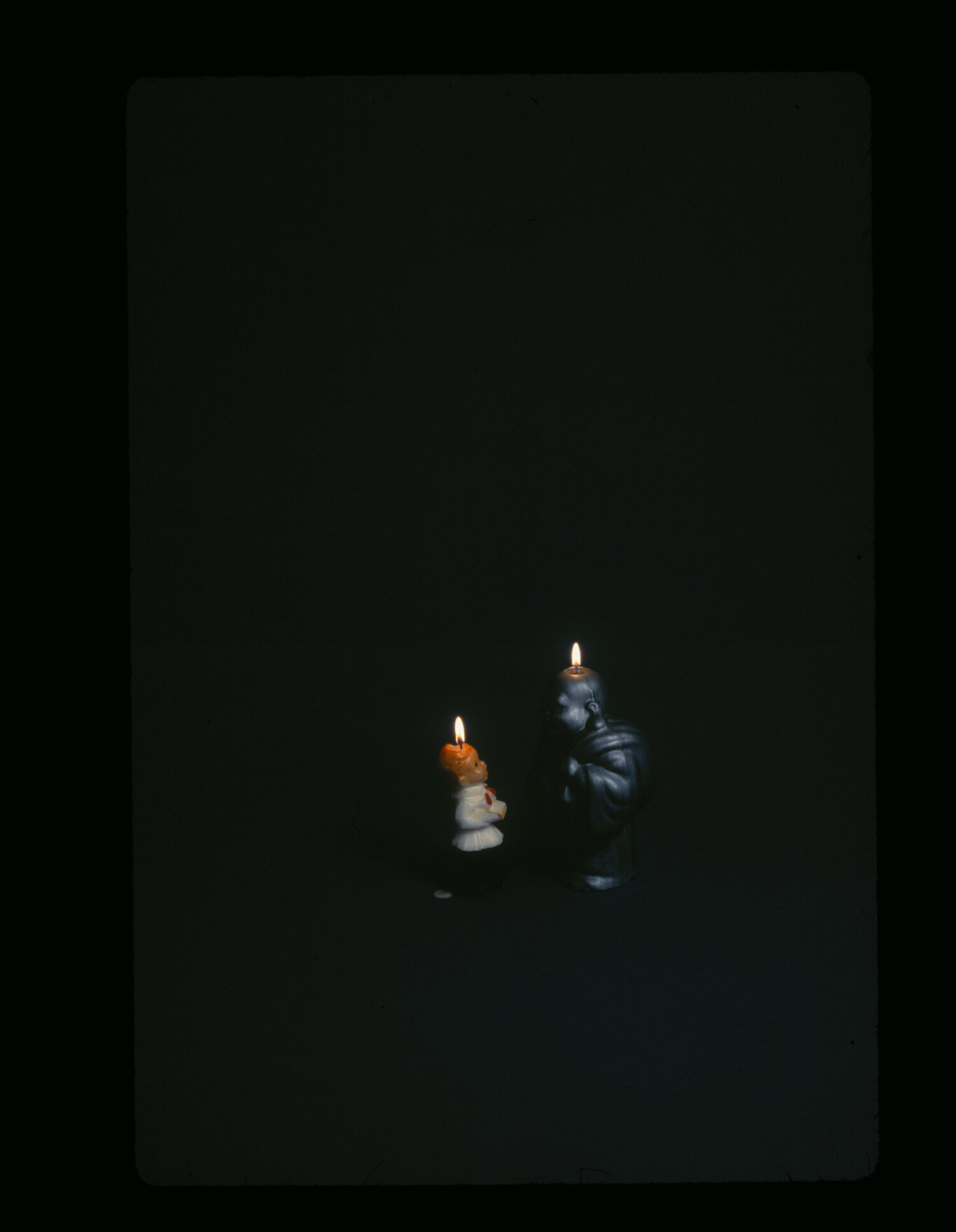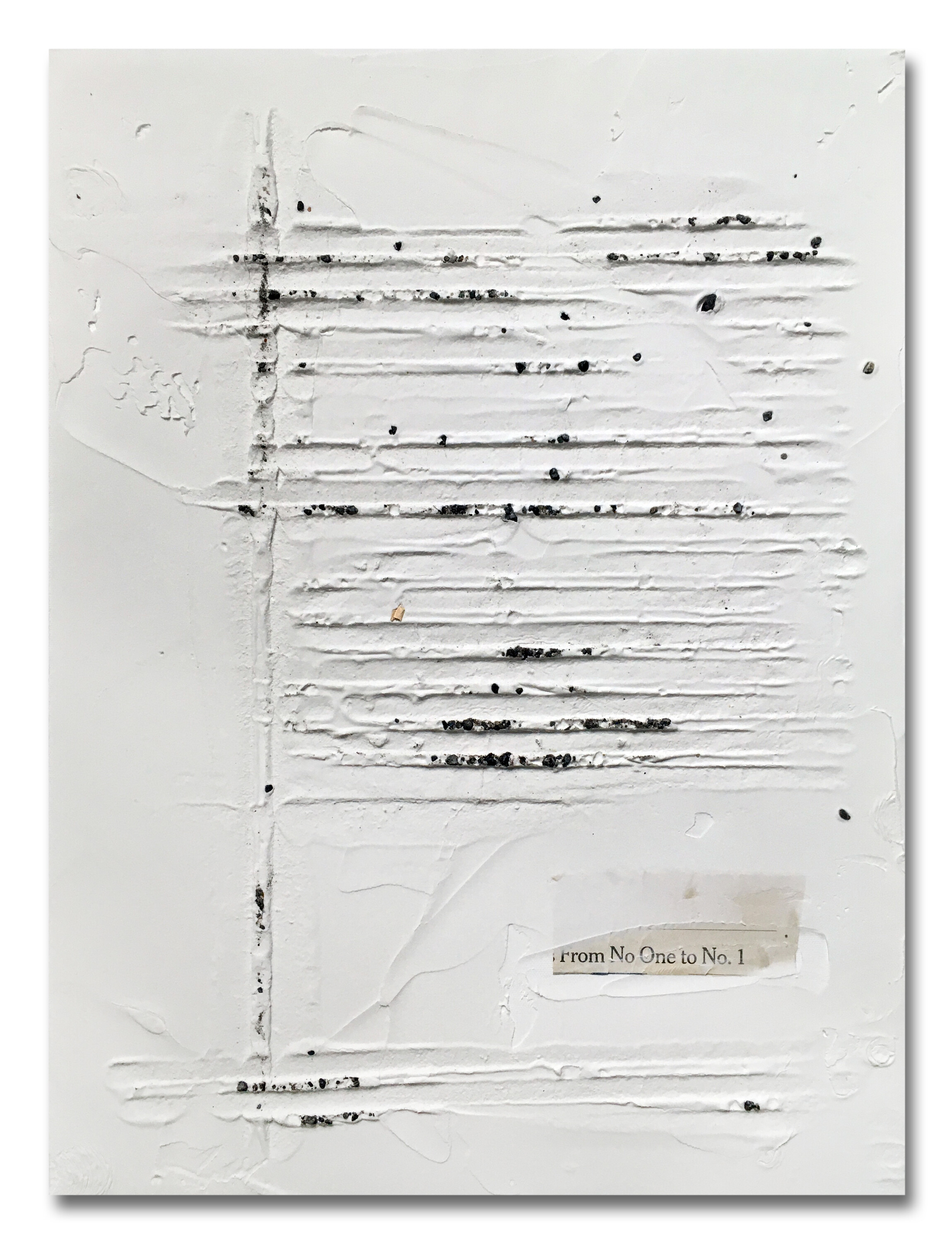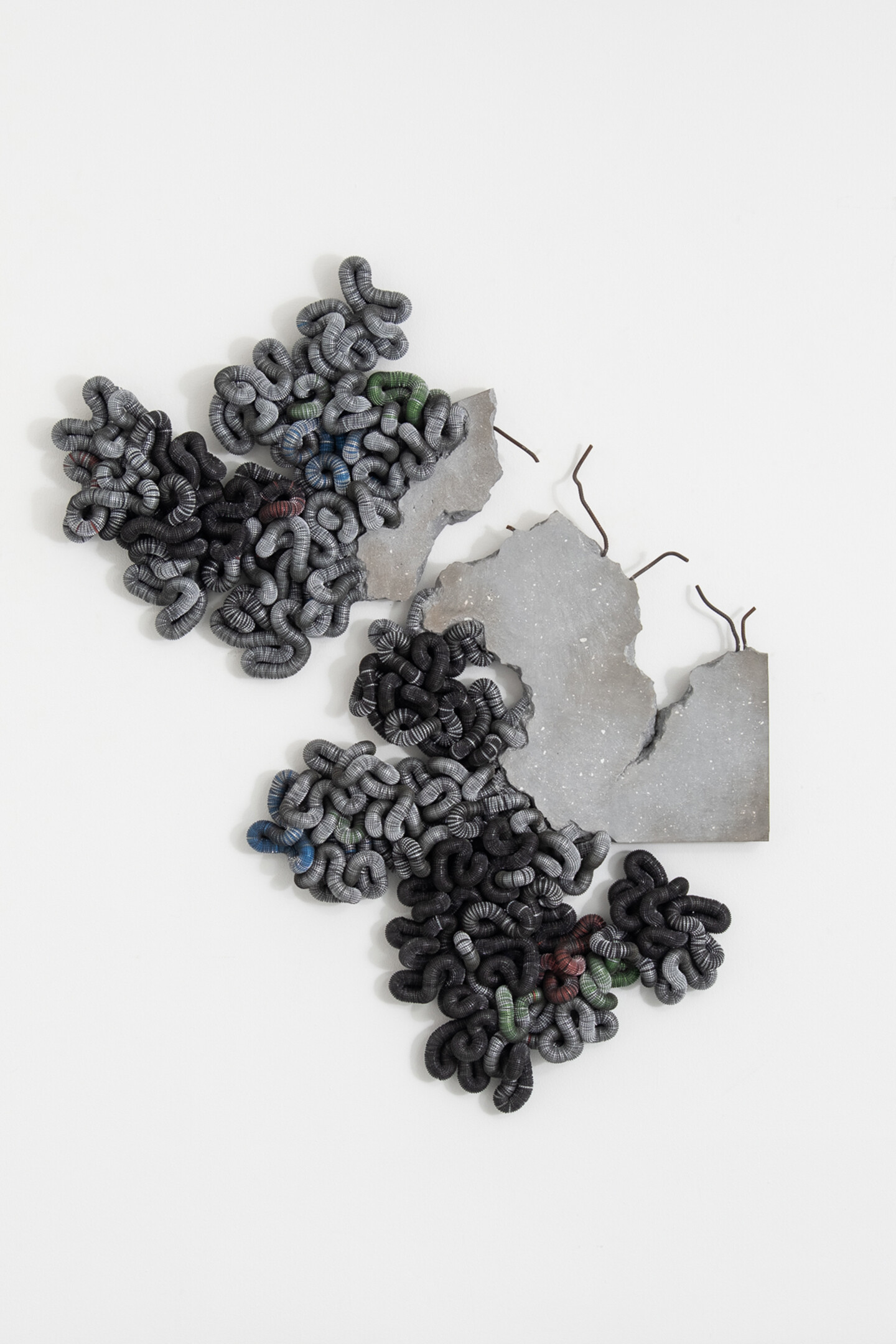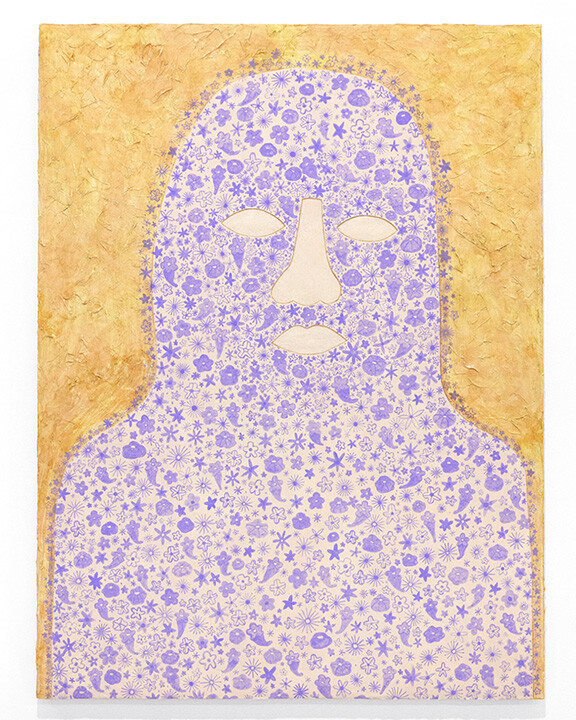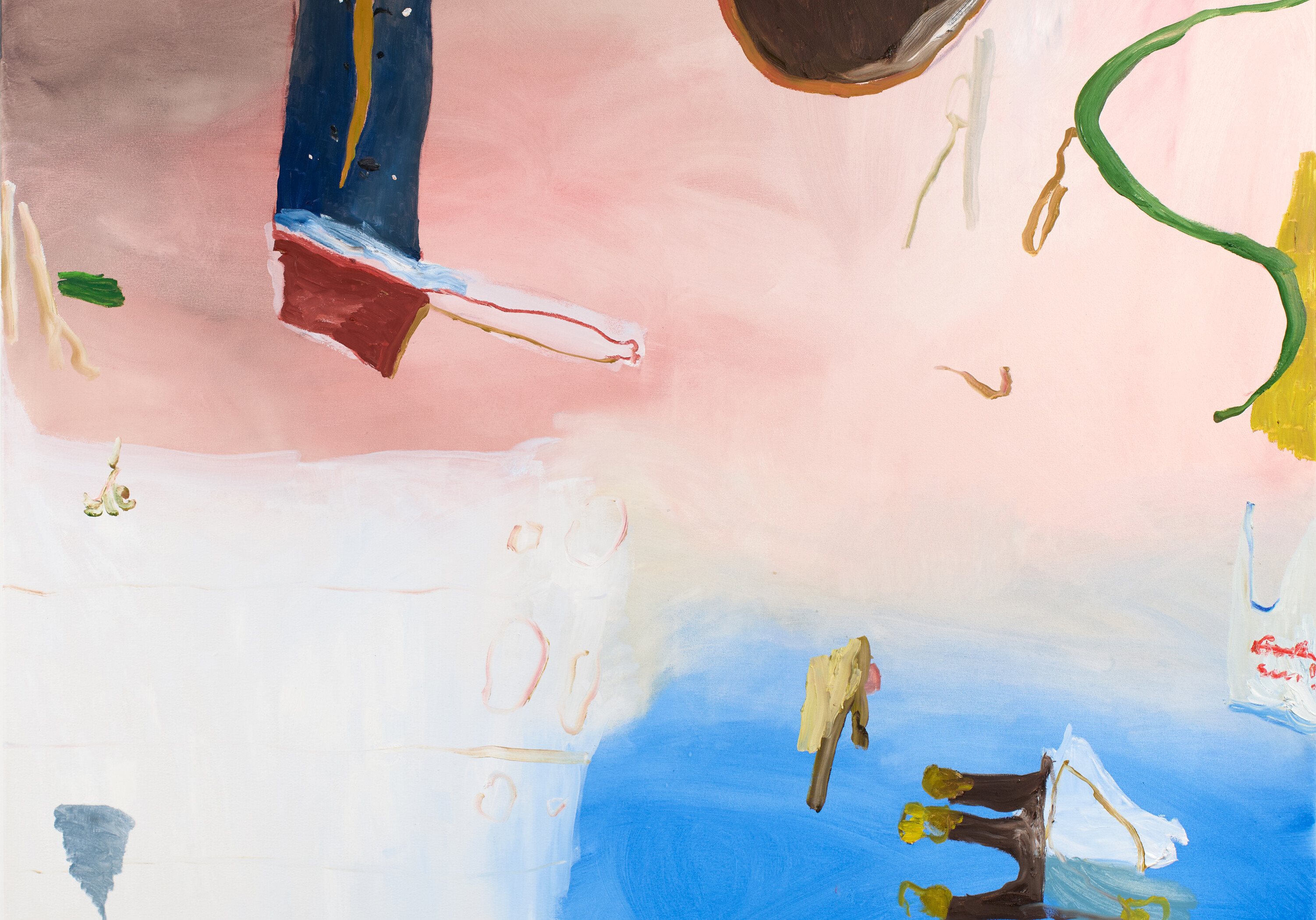
Explore the projects in Focus 2024, Passages, curated by Robyn Farrell.
In 1994, four gallerists conceived of an art fair that took up residence at New York City’s Gramercy Park Hotel. Installations of painting, sculpture, photography, video, and performance activated rented rooms across the hotel, galvanizing innovative modes of exhibition and spectatorship. The interconnected ambition of the young dealers and layered media platform produced a radical set of conditions for art and experience that persists at The Armory Show today. This year’s Focus section is inspired by the experimental spirit of the fair’s founding as well as its namesake, the 1913 Armory Show (International Exhibition of Modern Art). These avant-garde legacies serve as touchstones for this section, recalling its distinct history on the occasion of its thirtieth anniversary, underscoring New York City as both the location of the fair, and a site of boundless exploration. As such, the work in Passages traverses medium, place, and periods of time, situating the fair as a cross-disciplinary space of past and current forms of creative expression.
Like passages of writing or a musical score, thirty booths compose this section, highlighting emerging, established, and lesser-known makers of the last five decades. The artists of Focus offer multiple viewpoints from a range of local and global contexts, mapping half a century of history shaped by material and informed by personal experience. These artists push the thresholds of media and cultural form: documenting, manipulating, and questioning the conditions of art in our technologically saturated landscape. In this way, Passages unfolds as a space for engagement and dialogue concerning the role of identity, access, and environment in contemporary life.
- Robyn Farrell
Aicon Contemporary (New York)
Jeremy Dennis
Aicon Contemporary’s presentation highlights the work of Native American artist Jeremy Dennis of the Shinnecock tribe. The solo feature probes at the history and contemporary impact of American colonialism by exploring themes of Indigenous identity, culture, and assimilation. Dennis’s complex representations of Native people question and subvert biased tropes and damaging stereotypes, disrupting postcolonial narratives that dominate film and media, such as the “noble savage” depictions in Disney’s Pocahontas. The artist uses cinematic tools, such as costumes and lighting, to create provocative images and prompt dialogues on race and contested land in America. In a 2016 project, Nothing Happened Here, stylized portraits of non-indigenous people impaled by arrows symbolize, in a playful way, the “white guilt” many Americans have carried through generations, and the inconvenience of co-existing with people their ancestors tried to destroy. Dennis’ powerful photographs delve into ideas of home and ownership in the context of the Shinnecock tribe’s land in Southampton, Long Island. His images document the sites of Southampton, along with popular Native American myths, effectively shining a light on the history and culture of this often-ignored population. In these photographs, Dennis juxtaposes the past with the present, offering a haunting reflection on the enduring impact of history.
BANK (Shanghai)
Oliver Herring
BANK presents Oliver Herring’s key sculptural and performative works from the 1990s that helped define art in the era of AIDS and launched Herring onto the international art circuit. In response to losing one of his artistic heroes, the performer Ethyl Eichelberger, Herring began a silent protest through the laborious act of knitting, at first with transparent tape to express “the invisibility of being queer,” and eventually in silver mylar, “as a protective armor.” From 1991 - 2001, Herring knitted to mark his way through time. These sculptural works transcended gender associations in exquisite forms and gained critical acclaim through their expression of the body, loss, absence, and refuge. BANK presents two monumental mylar pieces; An Age for Hands, a six-panel quilt that was exhibited at the Guggenheim in 1997, and Big Round Flat, a spherical work that alludes to a crashed disco ball and was one of the last knitted pieces Herring produced. This work signified that the party was over for a community embattled in crisis and punctuated Herring's personal transition away from the solitary task of knitting to video. Untitled (Knitting), 1998, also presented in the booth, is the artist’s first-ever video work and serves as a career touchstone for the artist’s celebrated time-based work practice.
Blouin Division (Montreal, Toronto)
Caroline Monnet
In their solo presentation, Blouin Division will premiere a new body of work by artist and filmmaker, Caroline Monnet. Combining contemporary building materials with patterns transmitted across generations, Monnet creates hybrid objects, both conceptually and materially speaking. Resembling city maps and QR codes as much as they do traditional weaving and beading, Monnet’s works are rooted in an investigation of her combined Anishinaabe and French ancestry and grapple with colonialism’s impact, updating outdated systems with Indigenous methodologies.
Monnet draws from the modern built environment, as well as from her blended heritage, to invest pedestrian construction materials with new and nuanced meanings, and to create artworks with the ability to tell their own stories. These materials represent the construction industry (and Monnet’s inherent critique of its detrimental environmental impact), but also the concept of home and its varied associations, such as safety and security, questions of accessibility, and the idea of earth itself as our fundamental home. Monnet’s works are all featured against the backdrop of a wallpaper installation marked with traditional weaving motifs and birch bark biting shapes with minimalist lines. Creating a space thus symbolically linked with a home, Monnet’s patterns encircle the visitors, inviting them to consider a future where Indigenous knowledge informs creation, an act of making that is grounded in openness to dialogue.
Cecilia Brunson Projects (London)
Claudia Alarcón & Anni Albers
Featuring Claudia Alarcón and Anni Albers, Cecilia Brunson Projects’ dual-artist booth celebrates the avant-garde moment of the 1913 Armory Show and influences of pre-Columbian American tradition. The booth centers on Alarcón, an artist from the Wichí communities of northwest Argentina, while highlighting the longstanding influences of American cultures on international art prior to the formal recognition of individual artists. Alarcón’s textiles are woven from hand-spun fibers from the local chaguar plant. An inherited visual language of Wichí symbols provide a ground for her radical abstract weavings, which bend to forms of pure color that spill across the work and animate them, suggesting rushes of water or shards of light. They mark an important contribution to the rich tradition of geometric abstraction in South America, and to the strand of art history that includes Josef and Anni Albers’ exploration of pre-Hispanic South American textiles. Alarcón’s work will be exhibited alongside Anni Albers’ ‘Pictorial Weaving’ prints (1971 - 73). The pairing invites critical thought on the directions of influence and the European fascination with indigenous visual cultures in twentieth century art, while also celebrating the habitual return to pre-Columbian geometries as fertile ground for experimentation, in resistance to viewing these as static traditions.
Corbett vs. Dempsey (Chicago) & Fierman (New York) (Co-presentation)
Jimmy Wright
Corbett vs. Dempsey and FIERMAN are collaborating on a solo presentation of 1970s works on paper by Jimmy Wright. Raised in Kentucky and educated in Illinois, Wright moved to New York City in 1974 where he immersed himself in the liberated gay scene of his newly adopted urban environment. Created during this period, Wright’s drawings capture the queer landscape of the city, documenting scenes in bathhouses and bars in post-Stonewall and pre-AIDS epidemic Manhattan. The collection of work marks a distinct moment in the artist's early career celebrating the counter cultural scene of his generation in a formally diverse, visually potent, and pulsating portrait of a heady time.
Dastan Gallery (Tehran)
Farideh Lashai & Pooya Aryanpour
Dastan Gallery’s presentation includes the work of two artists whose practice has often explored the theme of memory and recall. They employ long-standing artistic and cultural traditions to create work that transcends the reach of a singular sensation.
Pooya Aryanpour sets out to remap and expand the architectural techniques of mirror-work to craft ambiguous forms that simultaneously seem representational and abstract. His work focuses on creating mystery and suspense, exploring subject material rooted in the traditions of Iranian culture, symbolism, schools, and styles of narration, storytelling and folklore, Persian calligraphy schools, and their impact. His sculptural pieces often take the observer beyond their physical boundaries, as they create wide reflections that lead to plays of light, lines, and forms that create a sensory presence. In dialogue with Aryanpour’s sculptures, the booth features the work of Farideh Lashai, an artist who was renowned for her multidisciplinary approach with painting, video, and installation. Her works often reflect themes of nature, history, and literature, and she is celebrated for her ability to combine traditional Persian aesthetics with modern techniques. Lashai's influence extends beyond her own creations, as she has inspired a generation of Iranian artists through her innovative practice and artistic vision.
Luis De Jesus Los Angeles (Los Angeles)
Hector Dionicio Mendoza
Luis De Jesus Los Angeles highlights a dynamic installation of sculptural works by Hector Dionicio Mendoza. Mendoza’s works align and complement the fair’s inaugural experimental spirit by employing radical strategies for poetic interventions of interdisciplinary forms and cultural exchange. Combining an array of sculptural forms and common materials, Mendoza’s works fluctuate between abstraction and figuration, igniting narratives that embrace magical realism and Latinx/e futurism while exploring themes of the environment, spirituality, and geographies of place, memory, and identity. Mendoza materializes oral histories, familial parables, and communal experiences to engage the many myths and realities of migration—particularly the realities of the U.S./Mexico border. Inspired by ethnobotany and memories of his grandfather, a fifth-generation Afro-Caribeño curandero (shaman), Mendoza's materials embody narratives expressed in the works, utilizing materials associated with place, such as earth and flora; materials related to labor, such as corrugated cardboard and cinderblocks; and quotidian found objects, such as plastic bottles and recycled items, along with the artist's own concoction of ethnic bread (produced from his study of global flatbreads). Mendoza manages a poetic flux between the often ignored familiar and the awe-inspiring mythical with his ability to evoke weight, emotion, struggle, and hope to elicit wonder and empathy.
ET AL. (San Francisco)
Emma Cook
ET AL. presents a solo program with artist Emma Cook. The artist’s work intertwines a deep love of paint and painting with a complex cinematic vision of America. In (most often) black on black or black on a silvery-grey ground, eerie expanses of tamed western landscape crisscrossed with fences and high-tension powerlines recall the repetitive marks of Japanese woodblock prints. The works are frequently broken up into blocks, with inset images of folk art/figures, making the compositions read like a zine or comic, only the precise narrative is constantly eluded and the cast of characters ever expanding.
Henrique Faria Fine Art (New York)
Valerie Brathwaite and Mercedes E. González
Henrique Faria New York presents a program centered on feminine ecology, featuring a dialogue between Mercedes Elena González and Valerie Brathwaite focusing on nature and identity, with the iconography of the body fully exposed without social and cultural repression. From 1976 to 1985, Mercedes Elena González produced her first body of drawings exploring the experience of being a woman. These works feature detailed circles and shapes that resemble body parts, fleshy landscapes, spirals, and seashells. These shapes represent the female reproductive cycle and connect the female body to ecology.
Valerie Brathwaite’s practice has drawn inspiration mainly from the natural world. First and foremost a sculptor, she creates forms of organic abstraction using simple sculptural volumes and sinuous lines resembling the flora, fauna and landscape of the Caribbean and South America. Celebrating nature and fertility, the presentation is a radical and poetic approach to the female body as a rapturous but complex ecology steeped in growth, development and, finally, regeneration.
Fridman Gallery (New York)
Wura-Natasha Ogunji
Fridman Gallery’s solo presentation features a new body of work by Wura-Natasha Ogunji. At once figurative and abstract, Ogunji’s delicately stitched drawings often include figures running, jumping or moving through space, a nod to her history as a photographer, as well as her own running practice. Ogunji's most recent works incorporate text and sometimes include imagery on both sides of the paper or linen. Her work often speaks about her experiences living in Lagos, Nigeria--from the personal (notes in her father's dream journals) to the collective (interactions in busy market spaces). Her performance practice also informs her use of materials and methods.
Asya Geisberg Gallery (New York)
Rodrigo Valenzuela
Asya Geisberg Gallery’s presentation centers on a multimedia installation by artist Rodrigo Valenzuela. Titled the Garabatos series, this group of photographs and sculptures is inspired by Valenzuela’s research on Latin American protests during the dictatorship years of the 1970s-’80s in the aftermath of a CIA-led initiative aimed to militarily neutralize socialist agendas in South America. Starting with archive images, Valenzuela isolates bodily gestures to create his own visual vocabulary - forming the basis for the sculptures in his tableaux. Garabato can be translated to “scrawl”, or colloquially, an insult screamed on the streets or stadiums in Chile. For the artist, these insults codify the guttural social responses to unfairness and anger. Valenzuela sees the abstract bodily gestures as a collective lexicon, a desperate attempt to communicate amid political repression. The booth is anchored by wood scaffolding that contrasts with Valenzuela’s mostly white photographs. Ceramic sculptures resembling cast body parts, inspired by the photos, but not the objects depicted therein, extend out from the scaffold creating a multi-dimensional interplay that guides visitors intro and around Valenzuela’s conceptually constricted world. The scaffolding conflates the purposes of a museum, subverting the ideology of canonized beauty, class, and information into a more egalitarian place of popular wisdom.
Goya Contemporary Gallery (Baltimore)
Louise Fishman
Louise Fishman's feminist consciousness-raising paintings reappropriated the male-dominance of abstract expressionism through the lens of her queer, Jewish, female identity. Fishman moved to New York after graduate school and initially felt alienated by the machismo of the scene. Active in the feminist movement of the late nineteen-sixties and early seventies, Fishman began rebelliously re-appropriating the traditionally male-dominated medium of Abstract Expressionist painting for herself and her community of supportive females. Her momentous, charged, 1973 word-painting series “Angry Women'' reclaimed the ferocity of women by referencing key figures in the feminist movement-- friends, lovers, writers, artists, heroines-- memorializing their righteous female anger in a cathartic reaction against the conventions of social conditioning to conceal female wrath. Illustrated with the subject’s name and the affirming word “angry”, this series ceremoniously salvages feminine fury with the visual and physical indication of explosive mark making that Fishman became known for throughout her illustrious career. As women around the world continue to face oppression, Fishman’s series of 30 paintings feels as relevant and profound now as when originally made.
Susan Inglett Gallery (New York)
Channing Hansen & Wilmer Wilson IV
Susan Inglett Gallery presents a selection of works by Channing Hansen and Wilmer Wilson IV. With multifarious practices and rigorous processes, Hansen and Wilson exemplify the avant-garde and interdisciplinary history of The Armory Show. Both make works that ride the line between drawing and sculpture, rejecting stylus and pigment and employing nontraditional materials in their stead. Hansen’s hand is present throughout his process: shearing, collecting, dyeing, spinning, and knitting. The only moment he is not present is in the algorithm he writes that determines the composition, ceding control in a nod to his grandfather, Al Hansen, and his roots in Fluxus. The process represents a marriage of technology and the natural world that produces vibrant and haptic knit works. Wilson employs the staple as his mark-making tool, producing speculative infrastructures and anonymous personas that navigate urban spaces and complicate the ethics of viewership. In prior performances, Wilson others himself via a second skin, erasing physiognomy and rendering the artist unidentifiable as he interacts with the public. He continues this exploration in his work with staples, armoring Black bodies with impenetrable swaths, simultaneously protecting and obfuscating. The imagery is removed in his most recent works, allowing the staple to become the vehicle for representation. Warm, saturated fiber contrasted with cold, abrasive metal, the artists are complimentary in their differences, and the tactile nature of the work generates common ground.
Kapp Kapp (New York)
Louis Osmosis
Kapp Kapp presents a solo program with multidisciplinary artist Louis Osmosis. Organized in the form of a suite of new 'coaster' paintings and suspended sculptures, the presentation explores the artist's ongoing engagement with representation and performativity.
Osmosis's "coaster paintings," are the first paintings the artist—who works primarily in sculpture—has produced to date. They riff on the post-minimalist relationship to paint, using ring marks and drips left by water glasses and other fluids, invoking the mark making of Sigmar Polke or Bridget Riley, instead to serve as collateral artifacts of a provisional labor, which is only furthered by their support, which the artist has "painted" on drywall resembling the shape of a canvas. Hanging centrally in the booth, Osmosis introduces a new suite of suspended sculptures, a series he has titled Centrifugal Pickle (Fly Trap). The artist formed the works using a convexed sheet of reclaimed metal, which has been speckled with regalia by way of found tchotchkes and kitsch. The hanging form, which is meant to mimic the form of a hanging flypaper trap, like Osmosis' "coaster paintings" concede to the putrefaction of labor, like flies rotting on their trap.
Eli Kerr (Montréal)
Jean-François Lauda
Eli Kerr’s booth includes a solo presentation by Montreal-based painter Jean-François Lauda. At 96 inches in height and 72 inches in width, the large-scale and detail-rich paintings offer an expansive surface and momentous scale that allows the viewer to have a corporeal relationship to the work upon their encounter. The works incorporate both acrylic and oil paint, materials that offer disparate zones that cohabitate within the painting. The viewer is met with harmony and discord within the same picture plane. A condition of the expansive surface and palimpsest nature of the work is that viewers are compelled to enter the paintings time and time again, with each encounter presenting aspects and layers of the painting anew.
moniquemeloche (Chicago)
Ebony G. Patterson
Ebony G. Patterson's expansive practice addresses visibility and invisibility through explorations of class, race, gender, youth culture, pageantry and acts of violence in the context of "postcolonial" spaces. Since 2013, the idea of the garden, both real and imagined, has formed an essential arc of Patterson's practice. Framing the garden as an active site of power, Patterson explores it as a metaphor for postcolonial space and an extension of the body. Her ongoing series "Studies for a vocabulary of loss" will command the entire booth, enveloping the space with a series of 18 framed works, each work is intricately embellished and densely layered in order to draw the viewer closer and to question how we engage in the act of looking. Entrancing and colorful, Patterson's works prompt the viewer to look beyond their rich formal characteristics and to acknowledge the realities of social injustice. Using the paradoxical to convey important messages, she draws on far reaching vernaculars of art history, religious imagery and popular culture. Patterson explains that she uses beauty to trap the viewer 'physically, psychologically and emotionally' in intricate and seducing compositions. Shrouding figures almost completely, the artist creates a presence of bodies no longer there, which raises pertinent questions about those who are not visible.
Patrick Mikhail Gallery (Montreal)
Claudia Hart
Patrick Mikhail Gallery presents artist Claudia Hart’s new project that reimagines seven little-known painters she selected from the 120 women artists exhibited at the 1913 Armory Show (International Exhibition of Modern Art), organized by the Association of American Painters and Sculptors. For the Patrick Mikhail booth, Claudia Hart, a pioneer of virtual art for the past thirty years, has created a series of nine paintings framed in white museum-style wooden frames. With this program, Hart has inaugurated a new way to paint, making pictures that hover in a space between the natural and unnatural worlds. Her pictures combine classical brush painting with the advanced simulation technologies normally used in scientific visualizations and 3D game environments. These paintings remix post-Impressionist and Fauvist paintings by artists Marion H. Beckett, Marie Bracquemond, Emilie Charmy, Marjorie Orga Henri, Marie Laurencin, Jacqueline Marvel, and Katharine Rhoades, with Hart’s own contemporary versions of them. Hart’s novel process is a kind of dance between the hand-made and the computer-assisted, channeling the ghosts of the past in order to re-present art history, inserting the voices of forgotten women.
Ochi (Los Angeles, Sun Valley)
b. cheyaheb
b. chehayeb’s paintings transcribe memories and sensory experiences into gesture, color, and texture. Using oil paint and oil stick, chehayeb records stories, as they exist in her memory, translating them into semi-abstracted compositions, perforated by chehayeb’s growing lexicon of symbols—cowboy boots, horses, snakes, ladders, tamales, the letter ñ—where each painting represents a moment, gesture, or feeling from the artist’s life. Painting amorphous scenes with multiple perspectives and times, chehayeb finds freedom in continuously defining her identity—one she describes as beyond the binary and always evolving. Having grown up across western Texas in a religious, Mexican American family, chehayeb’s work focuses on the reconstruction of failed memories, specifically memories warped by nostalgia, gender, language, and cultural hybridity. chehayeb incorporates stories, cultural references, and traumas into her work, alternating between representation and abstraction as a powerful tool for healing and storytelling.
Working across several scales, chehayeb’s new cycle of paintings appear as a mythological constellation as she deconstructs and appropriates the “lone star” of the Texan flag. Slowly morphing into an all-seeing nonbinary entity tumbling through memories—with each of the five points representing limbs and a head—chehayeb’s star fends off the trauma-inducing policing of gender, sexuality, education, and individual expression, freedoms often at risk this region of the country. Installed across an enlarged, inclusive wall-sized painting, Tejanx star portals mark time and space across chehayeb’s queer, Latinx multiverse.
pt.2 Gallery (Oakland)
Liz Hernández & Ryan Whelan
pt.2 Gallery presents a dual-artist presentation featuring works by Liz Hernández and Ryan Whelan. Hernández and Whelan have significantly influenced each other’s exhibitions over the years as both partners and studio mates, and together have shaped unique ways of dealing with the collateral effect of the now. In responding to society's obsession with modernity and progress, they draw from past philosophies to find space for the soul—inspired by the literary legacies of writers like Jorge Luis Borges and Clarice Lispector. Through a centralized presentation of collaborative objects that merge their creative language and use of materials, they aim to showcase the immutable powers of the written word. Whelan seeks to crowd the walls with collage-based drawings and photographs obscured by impasto applications of painterly abstraction, akin to the editing process in writing. Hernández will emboss aluminum and carve stone to immortalize moments of revelation while continuing her commitment to craftsmanship and exploring the language of materials. Their joint presentation is a testament to the artists’ ongoing search for deeper purpose in an increasingly disconnected world.
Pierogi (New York)
David Scher & Ward Shelley
Featuring works by David Scher and Ward Shelle, this two-person presentation will spotlight multidisciplinary work that resists simple categorization. Scher’s approach consists of establishing fields where multiple things occur: musical scores, bookcases, tabletops, stages, walls. Their surfaces are studded with collaged, cannibalized sections torn from other drawings, and both figurative and abstract elements. His works are simultaneously recordings and scores. The booth includes a selection from his 1,000+ sketchbooks, depicting his wildly creative thought process. Ward Shelley’s timelines are graphic depictions of complex relationships between events and people over time. Who Invented the Avant-Garde, Shelley’s interactive performance, installation, and timeline works have been shown widely domestically and internationally.
Galerie Nicolas Robert (Montreal, Toronto)
Anahita Norouzi
Galerie Nicolas Robert’s booth will feature new work by Iranian-Canadian artist Anahita Norouzi created especially for The Armory Show. Visitors will experience a poetic exploration of interdisciplinary forms and cultural exchange that furthers Norouzi’s ongoing project of honouring her ancestral homeland by exposing the impacts of 200 years of resource extraction and exploitation by colonial forces in the Middle East. Norouzi’s materially rich, multi-part installation will consist of sculptural elements that analyze the political, social, and ecological complexities underlying the human relationship with the natural world and investigate the impact of historical colonialism and present-day globalism on resource-rich areas worldwide.
Looking both forward and backward in time, the work will shed light on the ways in which hegemonic powers have impacted humans and other species alike, creating mass movements that alter entire cultural traditions, demographics, and ecologies. The large-scale, immersive works will forge a parallel between power asymmetry in the colonial era and the persisting disparities within the contemporary North-South divide, unveiling the enduring presence of similar regimes of power.
Ronchini (London)
Rebecca Ward & Sandra Blow
Ronchini presents a duo booth featuring two female abstract artists from two different generations and two continents whose works transcend traditional modernist avant-garde presentations of abstract painting. Sandra Betty Blow, an English abstract painter and one of the pioneers of British abstract painting from the 1950s, is well known for her characteristically large scale, colorful abstract collages made from discarded materials. Elegant in abstract forms, the large scale acrylic collage on paper delicately hints at possible subjectivity. The abstract painting of American artist Rebecca Ward also experiment with the physicality of the canvas itself, as well as the boundary between abstraction and figuration. Ward’s wards are ripped, unwoven and restitched in order to reveal and obscure, and by their nature entice viewers to closely investigate contrasts in line and material, modulations in color and multi-dimensional layers. The distinctive interdisciplinary approaches of these two artists result in the creation of paintings which emanate a strong physical presence in space and reflect the experimental spirit of The Armory Show.
Sapar Contemporary (New York)
Bilge Friedlander and Benigna Chilla
Featuring singular works from the 1970s, Sapar Contemporary celebrates the minimalist legacies of Turkish-American artist Bilge Friedlander and German artist Benigna Chilla. The booth will showcase key aspects of the artists’ distinct visual languages of this period: extreme attention to color and texture, exploration of tone and contour, and illusion realized through close investigation. Friedlander’s geometric language is highlighted by a two-panel work on canvas. The white, blue and gray diptych is joined by set of mutating squares - a representation of spacelessness and a motif for which Bilge is well known. Chilla has examined the dialectic between geometric precision and the intuition of her subconscious throughout her career. The artist’s engagement with principles of planar geometry and her intuitive and personal pursuit of form and order are evident in the two paper sculptures included in this presentation. Conceived and created around the same time, the work on view brings elements of geometric, minimalist, and abstraction into form.
Saenger Galería (Mexico City)
Scott Reeder
Saenger Galería presents a solo feature by multidisciplinary artist Scott Reeder. The program features a selection of works from the artist’s most renowned series —the Word, Image & List paintings— alongside a selection of more recent bodies of work, such as the Object Paintings and his distinctive neons, that are defined by some of the fundamental interests of his practice: art history, the public use of art, and cultural critique seen through parody and sharp humor. Framed by palms, before a sunset rendered in a hybrid style that evokes English Romantic painter J.M.W. Turner and American musician Jimmy Buffet, the two figures—in the form of popsicles—of Reeder’s Paradise are caught between rest and resignation. Reeder turns objects into subjects, subjectifying the overlooked, the inanimate, the just there. And in doing so he makes them both funny and endearing. Beyond the luscious sunset of Paradise, there are far more common light sources: jaundiced bar light, the cold unloving glow of a computer monitor, anemic and angular spotlights illuminating a fashion show, or a stand-up comedy set. This painting might be a skeleton key to Reeder’s practice involving humor, anxiety, pathos, and the audience.
Secrist | Beach (Chicago)
Liliana Porter
For their 2024 Armory presentation, Secrist Beach celebrates the experimental methods of the pioneering Argentinian artist Liliana Porter. Known for work which playfully rebels against tradition, Porter’s idiosyncratic worlds disrupt notions of time, space, and reality. Drawing from an eclectic collection of figurines, knickknacks, toys, and souvenirs, Porter features characters in unforeseen combinations and circumstances. The unique situations she invents, where distinct events occur simultaneously, or dissimilar protagonists interact, wittily invite political, philosophical, and existential interpretation.
Walter Storms Gallery (Munich)
Caro Jost
With her concept of global working in public space, Caro Jost offers a value-free view of the world. At The Armory Show, Walter Storms Gallery will present the pursuit of the artist’s time-based permanent projects with the artist’s Streetprint series. On September 18, 2000, the artist made her first Streetprint in front of her NYC studio. For over 24 years, she has been documenting time, place and space worldwide (over 90 cities) with her own specially developed technique. At the same time, she has also been expressing her concern about how transience, reality and truth can be depicted in art. Streetprints are real imprints of street surfaces in a material on canvas and thus record the traces inscribed in sidewalks and streets over the course of time. Streetprints are abstract, but highly authentic. For the first time in the USA, we present a selection of more than 20 different Streetprints, made in locations that include: Paris, Moskow, Istanbul, Venice, NYC, Berlin, Havana, Taipei, Hong Kong, Abu Dhabi.
Marc Straus (New York)
Jeanne Silverthorne
Jeanne Silverthorne emerged during the 1990s, following exhibitions she participated in across New York City’s art scene, including Colin de Land’s iconic gallery, American Fine Arts and the 1999 Armory Show. For more than three decades, Silverthorne has been focusing on the dissection of the studio and construction of the uncertain self that operates both in the studio and in the world. Her work is meticulous and personal, first fashioning everyday items in clay, then casting them in industrial-grade rubber. These objects reflect reality but colored with pigments or changed in scale, they retain their uniqueness. Thus she creates sculptures that mimic everyday objects, such as light bulbs, wire cables, task chairs, or shipping crates. Such banal items become metaphors for the inevitability of age and decay, but tempered with humor, hope, and humanity. Marc Straus’s solo presentation of Silverthorne’s work highlights the physical and conceptual concerns of the artist’s practice while calling attention to her distinct relationship to New York and the Armory Fair.
WHATIFTHEWORLD (Cape Town, Tulbagh)
Chris Soal
WHATIFTHEWORLD’s solo presentation of South African artist Chris Soal will include all new sculptural works made in 2024. Comprising toothpicks, bottle caps and sandpaper, the installation oscillates between organic and industrial form. The materials and composition of the works in the booth serve as magnificent trophies of detritus mirroring the dichotomy of our paradoxical domination of, and dependence on nature.
Soal's exhibition, reflecting on the interconnectedness of micro and macrocosmic, becomes a metaphor for the global ecological network. The artist’s use of discarded items resonates avant-garde histories and radical strategies of sculpture, as a continuation of Duchamp's concept of the found object and acquires new relevance in the context of environmental sustainability. Soal's art goes beyond the mere use of industrial and natural materials; it is about the embrace of these elements and the powerful 'frisson' they generate within the viewer. Soal's choice of materials—toothpicks, bottle caps, and sandpaper —speak to this embrace. They are not random but carefully interwoven to create sculptures that resonate industrialization, consumption and the body within nature. The artist’s inaugural presentation in New York prompted a reconsideration of consumption patterns and the impact of human activity on the planet.
